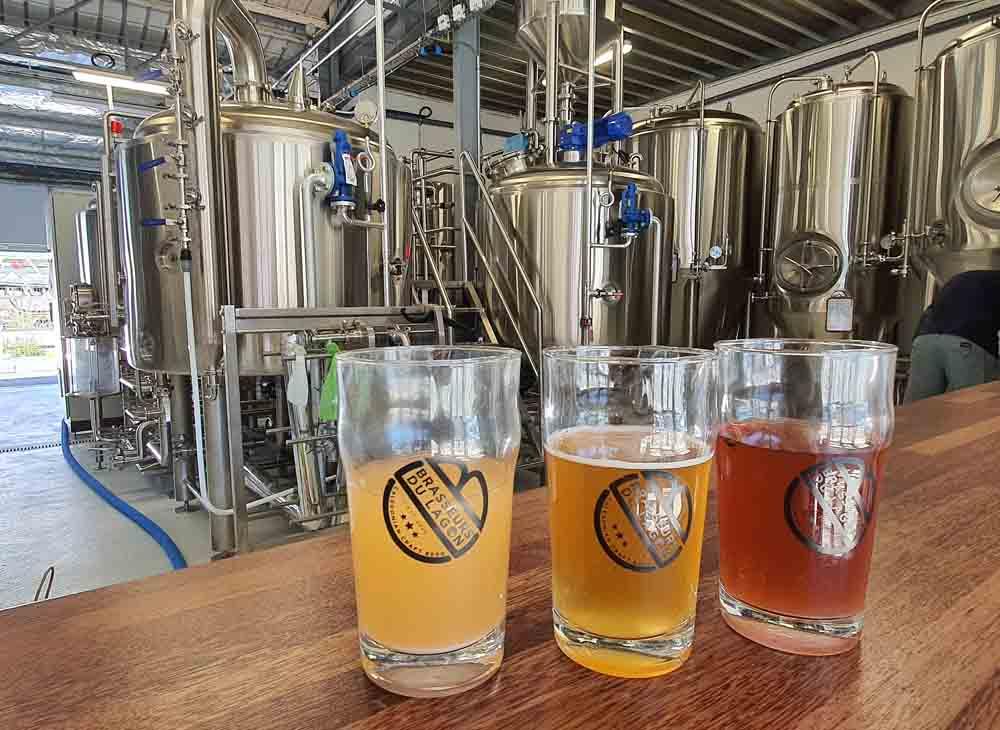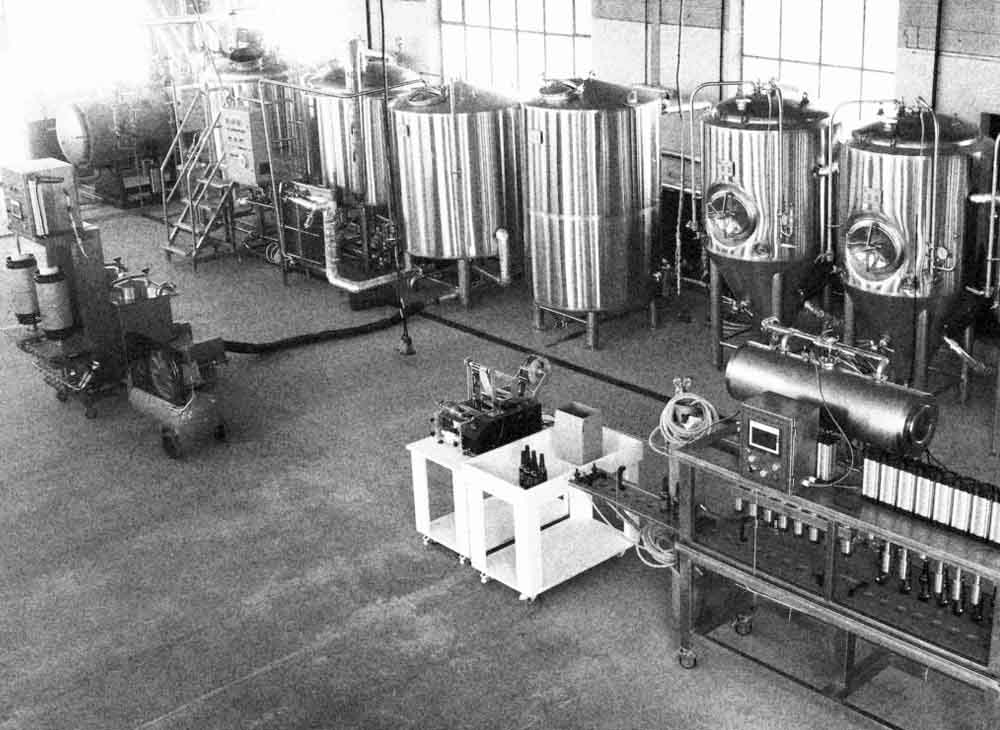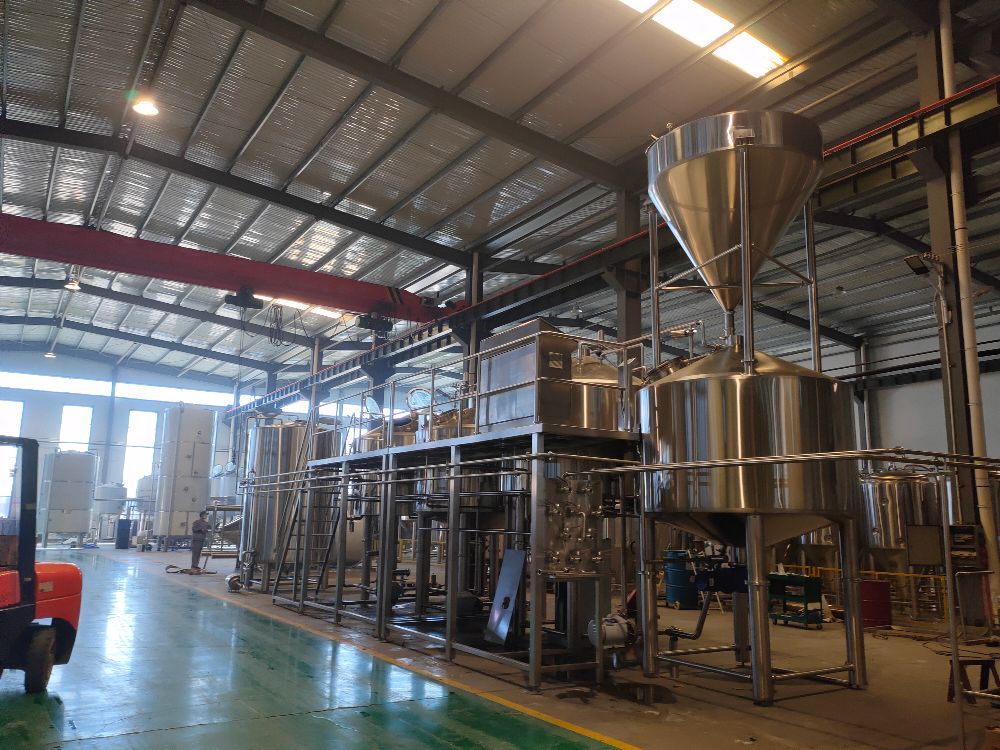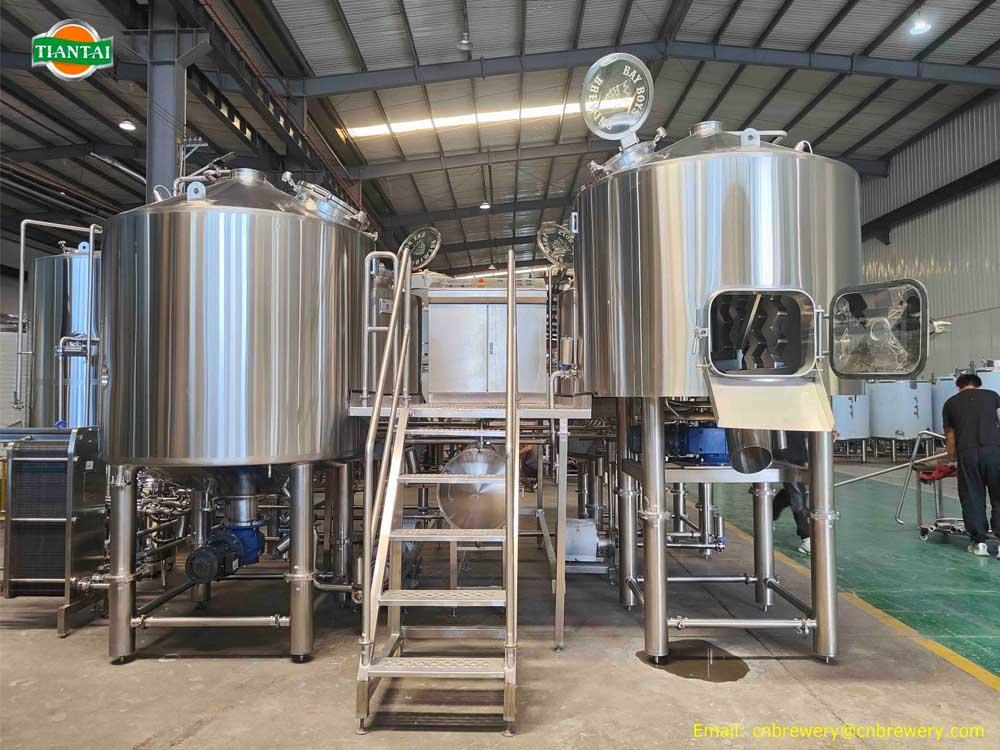HOW TO SELECT YOUR BEER BREWING EQUIPMENT
- Feb 26, 2022
- 168
- tiantai
Sizing Considerations
Most start-up microbreweries size their brewhouse at 10-30 barrels (1 barrel = 31.5 gallons = 2 big kegs = 240 pints of beer) and have equivalent-sized fermenter/brite tanks.Sizing the brewhouse is a balancing act for a new brewery that can’t be sure of sales and growth. Starting too big will place a strain on initial expenditures as well as make a bad batch of beer a costly mistake. Starting too small will make it difficult to catch up with demand and increases the cost of ingredients per batch since smaller systems utilize hops at lower efficiency. Many brewers will tell you that doubling the size of your system is much less than double the cost. This is usually true, however, that alone is not a good reason for buying a bigger system.
Consider the amount of physical space available in the brewery. If there isn’t much room to add additional fermenting and brite tanks in the future, starting with a large brewing system isn’t wise. It’s also important to consider the clear height of the ceiling compared to the diagonal height of the fermenting/brite vessels. These are the tallest vessels. Unless your space has a tall dock door, these tanks need adequate ceiling height to be tilted up to standing within the space. Large breweries will often create an opening in the ceiling to drop in these tanks.
Consider starting with a smaller brewhouse with room to add a dedicated whirlpool in the future. Then size the fermenters/brite tanks at double the size of the brewhouse. The tanks can be half filled when business is slow and filled completely with double batches from the brewhouse when demand increases. This allows the brewery to double their capacity with only about 30% higher initial cost compared to having to purchase additional tanks (which would be 100% additional cost).
Number of Vessels
A general rule of thumb is to purchase the number of fermenters and brite tanks needed to take you through the first 2-3 years of production. You can calculate the approximate maximum annual capacity of a fermenter using these metrics:Daily fermenting volume available = # vessels * volume of vessel
Turns per year = # of brew days per year / days to ferment average beer
Annual capacity = fermenting volume * turns per year
A way to simplify this is to assume 80% ale production (shorter fermentation time), 20% lager production (longer fermentation time) and 50 weeks of brewing (assumes some vacation and/or maintenance time):
Annual capacity = fermenting volume * 42
This also assumes that you have sufficient number of brite tanks to rotate beers this quickly.
If you plan to have a lot of different beers on tap at any given time, consider starting with the same ratio of brite to fermenting vessels.

Brewhouse Heat Source
There are three heat sources for the hot liquor tank and brew kettle:· Direct FireA flame heats the exterior of the tank which transfers heat to the liquid in the tank.
o Pros: least expensive; best option for small systems
o Cons: a concentrated area of heat that can scorch the wort; inefficient energy utilization (heat lost to surrounding air); not for use on systems larger than 10 barrels
· Indirect FireA relatively new method where flame heats air in a separate burner box that is then circulated throughout a jacket around the tank.
o Pros: priced similar to direct fire; no scorching
o Cons: not as efficient as electric or steam; not for use on systems larger than 10 barrels
· ElectricLarge heating elements are placed inside the kettle just like a residential electric water heater.
o Pros: less expensive than steam; very efficient energy utilization
o Cons: electricity sometimes more expensive than gas; needs 3-phase heavy power; not for use on systems larger than 10 barrels
· SteamThis is the industry standard for brewing systems sized 15 barrels and up. A separate boiler heats water with gas flame to create steam that is circulated through an insulated steel jacket around the kettle.
o Pros: fairly efficient; heats quickly
o Cons: most expensive; requires separate costly boiler; boiler maintenance
Choosing a Supplier
There are many suppliers of brewing vessels, especially given the boom of new breweries within the last decade. But most suppliers do not actually manufacture the vessels themselves. Rather, they are typically imported from manufacturers in China or other countries. While this can keep costs down for customers, the quality of the design, materials, and build varies wildly.If you do end up choosing a supplier that imports equipment, pick one that uses US-based engineers to design the equipment. Remember that importing from overseas adds significant shipping charges, often about 10% of the cost of the equipment itself. The wait time for delivery is also longer.
Verify that any foreign-built equipment has electrical components that are rated for your country along with design specifications in English.
The brewing industry typically places the most value on domestically designed and manufactured vessels. The US tends to have higher standards for the quality of steel used in food-grade equipment and the build tends to be better. This of course comes at a higher cost, but may be made up with saving more from shipping.
For any supplier, it’s very important to check their references. Ask for a list of their customers and contact them personally to inquire:
· What was ordered
· Quality of equipment received
· Any delays
· Issues encountered and how supplier responded
· Whether they would order from the supplier again
· If they recommend this supplier
Derrick
Sales Manager
[email protected]
Tiantai Beer Equipment




